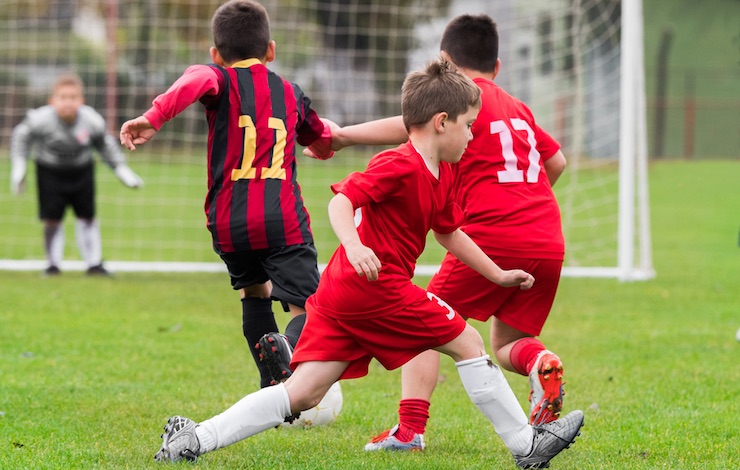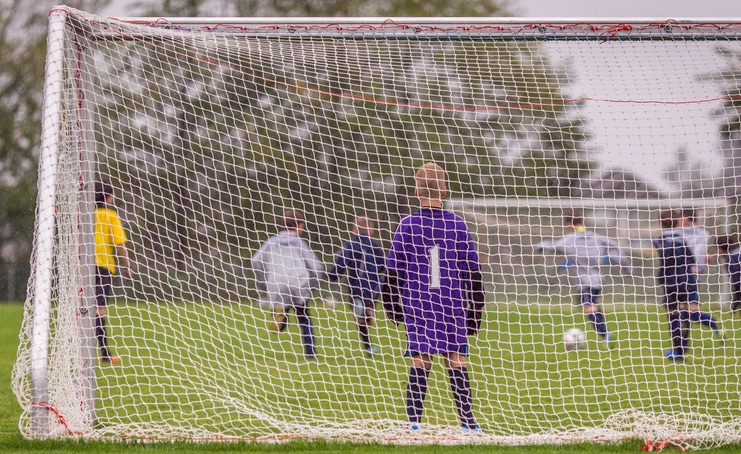Youth Soccer’s Small-Sided Games
By Randy Vogt
When I first started refereeing in 1978, all games that I officiated were 11 vs. 11.
Two decades later, small-sided games were introduced for the youngest players and it made a lot of sense. Smaller fields, smaller goals and a fewer number of players so everybody could get more touches on the ball to go along with the smaller ball that these kids were already playing with.
With youth soccer, the players go from a small-sided field to a large field, now at Under-13, quite easily.
But even today, I do not ref as many small-sided games as the 11 v. 11 games being played on a larger field. But in the small-sided games I’ve officiated, I have seen a growing number of teams use the goalkeeper punt as an offensive weapon, rather than retaining possession.
 With small-sided games, it’s relatively easy for a goalkeeper, particularly those who are Under-11 or Under-12, to punt the ball well into the other half of the field — and too many teams are doing this rather than concentrating on retaining possession and moving toward the opposing team’s goal that way.
With small-sided games, it’s relatively easy for a goalkeeper, particularly those who are Under-11 or Under-12, to punt the ball well into the other half of the field — and too many teams are doing this rather than concentrating on retaining possession and moving toward the opposing team’s goal that way.
U.S. Soccer should ban punting and drop-kicking in all small-sided games as too many teams are trying to play Route 1 and this is not helping their players’ development.
We must understand that nobody won a World Cup or received a college scholarship at Under-10, no matter how many goals they scored in that age group, and it’s vitally important for all teams to work on retaining possession rather than simply booting the ball upfield.
In this spirit, U.S. Soccer has taken a slightly different route as it has banned punting and drop-kicking in just Under-9 and Under-10 games, though (making it an indirect kick offense), and introduced the build-out line, an innovative step for player development.
I really like the build-out line, placed equidistant between the penalty area line and the halfway line.
The concept is great but the execution needs a little tweaking as the Player Development Initiatives directive from U.S. Soccer states that the opposing team can cross the build-out line after the ball is put “into play.”
If you take that directive literally, generally not a good thing to do with young kids, the ball is in play after a goal kick when it goes outside the penalty area and during the run of play it’s in play when the goalkeeper releases the ball.
The differentiation is confusing, particularly to a little kid. So I’ve had to help guide the young players in telling them when they could cross the build-out line during play.

Enforcing the rule this way, the keeper would have to roll the ball to a teammate standing a few yards away or a goal kick would be played to a teammate just outside the penalty area to avoid immediate pressure from opponents.
A keeper throwing the ball 10 yards or more to a teammate, even rolling the ball to the side of the field, would not result in “the build-out line promotes playing the ball out of the back in a less pressured setting” as the opponents could be right there when the keeper’s teammate receives the ball.
I believe that only after the keeper’s teammate touches the ball, the opposing players should then be allowed to cross the build-out line as enforcing the rule this way is in the spirit of what U.S. Soccer is trying to do. In the first couple of games that I officiated with build-out lines, where there was a lack of clarity in my mind exactly how “into play” should be enforced,
I did this and it worked out well with the goalkeeper’s teammate having approximately 2-3 seconds before an opponent challenged the ball. Teams were able to play the ball out of the back and this interpretation creates what U.S. Soccer seeks, a “less pressured setting.”
 I like the fact that the build-out line, and not the halfway line, is used to denote offside violations so an attacker cannot be penalized for offside between the halfway line and the build-out line.
I like the fact that the build-out line, and not the halfway line, is used to denote offside violations so an attacker cannot be penalized for offside between the halfway line and the build-out line.
This reminds me of the 35-yard line used in the original North American Soccer League. For our purposes today with little kids, it makes sense to enforce offside over a smaller portion of the field while still not allowing an attacker to hang out by the opposing team’s goalkeeper.
The build-out lines are definitely a work in process and US Soccer needs to make an adjustment in the rules before they and the other Player Development Initiatives become mandatory in August 2017.






